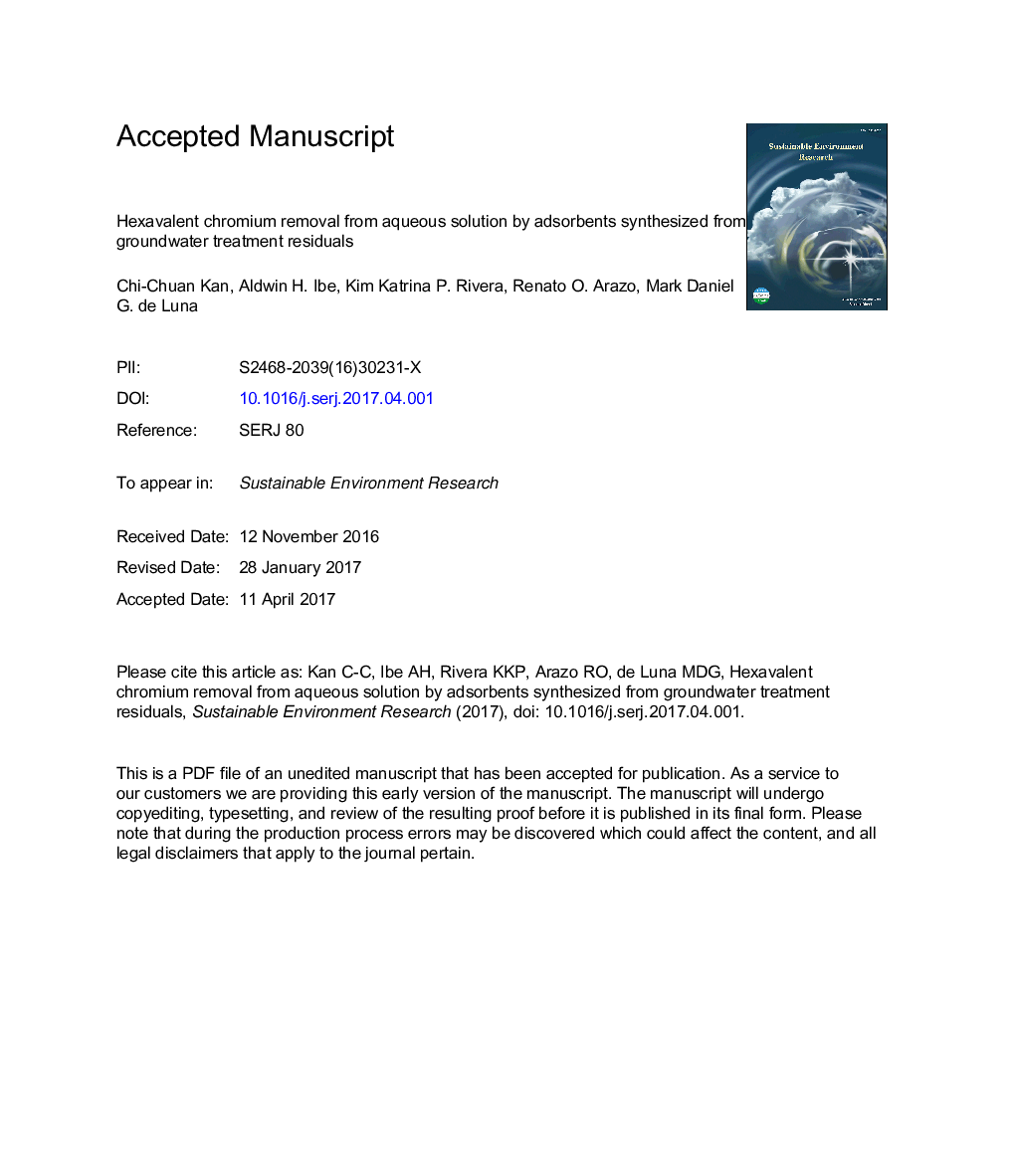| Article ID | Journal | Published Year | Pages | File Type |
|---|---|---|---|---|
| 8862959 | Sustainable Environment Research | 2017 | 25 Pages |
Abstract
In this study, silica sand coated with groundwater treatment residuals was used as adsorbents for the removal of hexavalent chromium from synthetic wastewater. Batch adsorption experiments were conducted to evaluate the effects of initial Cr(VI) concentration, solution pH, adsorbent dosage, solution temperature, contact time, as well as ionic strength on Cr(VI) removal. Results show that low solution pH and high ionic strength improve Cr(VI) adsorption onto the residual coated sand. At pH 4, the highest adsorption capacity was computed at 0.27 mg gâ1. The Freundlich isotherm model best described the adsorption process. From 298 to 318 K, the high correlation of the kinetic data with the pseudo-second order model (R2 > 0.981) and a highly positive activation energy value (22.7 kJ molâ1) indicate that chemisorption is the rate-controlling step of the adsorption process.
Related Topics
Life Sciences
Environmental Science
Environmental Engineering
Authors
Chi-Chuan Kan, Aldwin H. Ibe, Kim Katrina P. Rivera, Renato O. Arazo, Mark Daniel G. de Luna,
